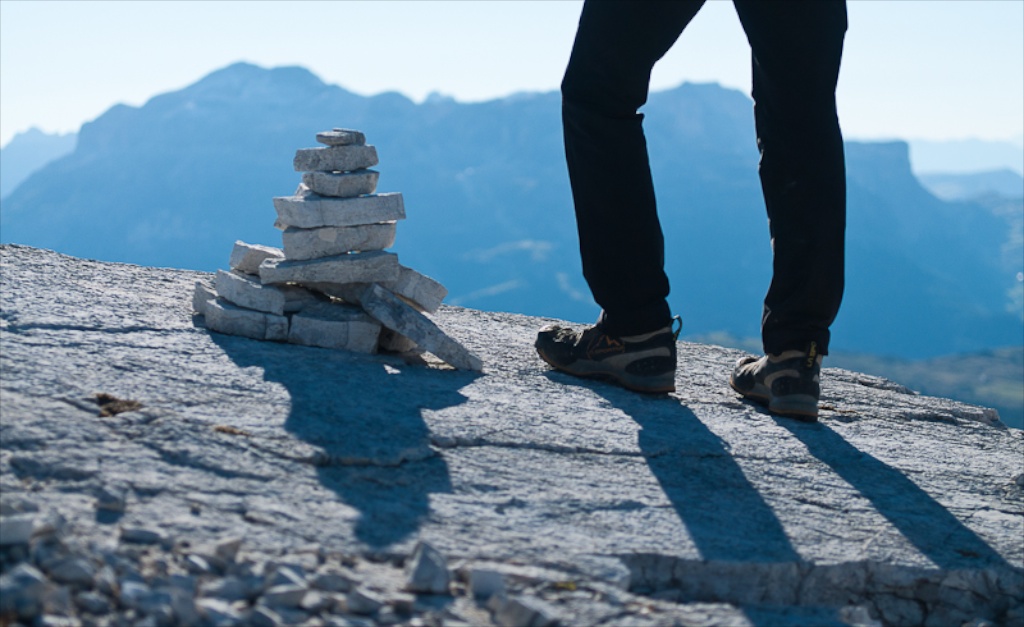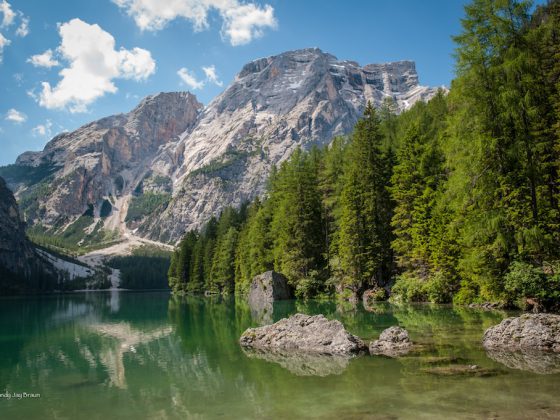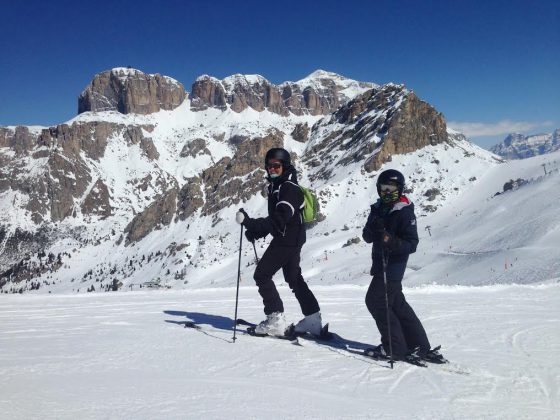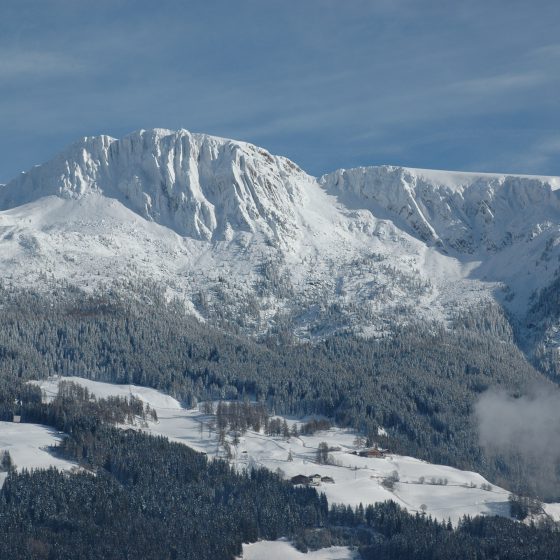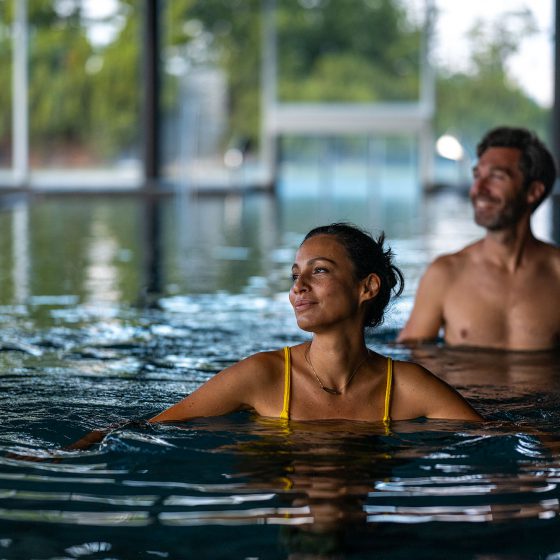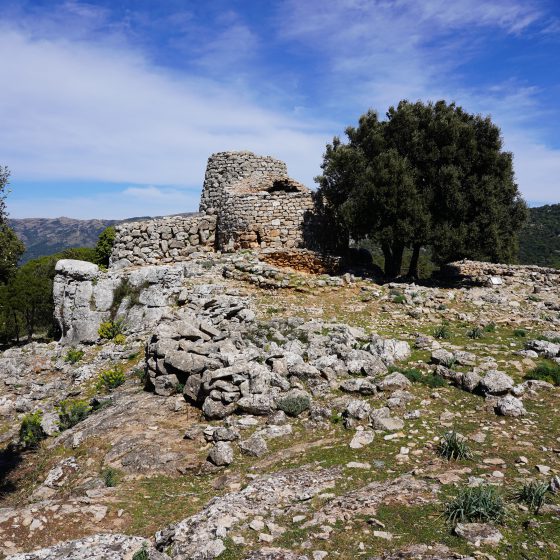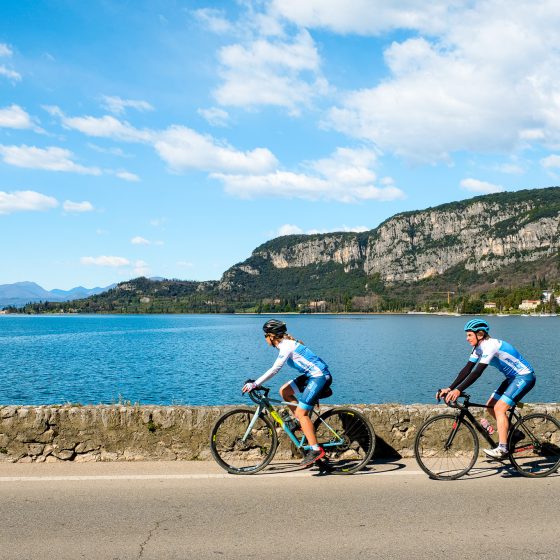Perhaps one of the most exhilarating activities available here in the Dolomites is climbing a via ferrata, along fixed protected paths that are lined with iron “ladders” to assist. These routes vary in difficulty and allow access to areas otherwise unreachable, thus providing breathtaking views and an experience not to be forgotten. Of the many available via ferrata paths found in the Dolomites, the following five are relatively easy to tackle and are excellent for first time climbers. For more detailed itinerary options visit our Dolomites Via Ferrata page.
Averau
This short, pleasant route begins with a chairlift from Rifugio Fedare up to Rifugio Averau. It can also be accessed from Cortina d’Ampezzo, by taking the SS 48 towards Passo Falzarego, hopping on a chairlift to Rifugio Scoiattoli, and traveling path 439. Once you reach Rifugio Averau, the marked path will lead you northwards to the start of the ferrata, which sits just below Averau’s northeast gully. A short ascent up the 60m lined path will bring you to the crest, where the views are simply magnificent.
Cir
There are two choices for this via ferrata, Piccola (Small) Cir and Grande (Big) Cir. Piccola Cir covers 400m and features a moderately difficult climb, while the 600m Grande Cir offers a much less challenging path. Either can be conquered in less than 3 hours, making them perfect for an afternoon outing.
The Piccola Cir is a bit shorter, but can be quite exhilarating given its steeper, more challenging terrain. It is accessed by heading right from the top station of the Dantercëpies lift, over the crest to the gorge below. The via ferrata begins on the right hand side of the gorge. A steep ascent up a small ladder and along a wall, you continue toward the right and up a lofty rock to reach the summit where breathtaking views abound.
Grande Cir offers a much easier ascent that is suitable for most climbers. Take the path toward the gorge on the west and ascend until you reach a protected ledge, where the path forks right. Continue on the ledge over the rock slabs toward the side of the mountain. The stepped rock is quite manageable, with broad ledges that lead to the summit of Grande Cir. It’s a straightforward climb that offers an incredible lookout of the landscape below.
Col dei Bos
This impressive network of steel cables, protective cones and special bolt reinforcements ascends along the south face of the Col dai Bos. Cortina d’Ampezzo provides easy access to this ferrata, with a drive along SS 48 toward Passo Falzarego, ending at the Da Strobel restaurant. There you will see the path, which contains easy to follow signs. Along the way you will pass fascinating historical remnants of a First World War hospital. Continue east, across pleasant meadows toward the Col dai Bos pyramid. From there you can access the ascending route that leads to the ferrata.
The first part of this ferrata is the most challenging section, but it gradually gets easier at about 80m, where you reach a wide ledge and a short wall, leading to several manageable slopes. You’ll then reach the second half of the ferrata, which contains some technical sections but is slightly easier than the first half. The views during this part are simply spectacular, particularly those of the Cortina basin.
The final ferrata section is 100m long and contains some vertical segments, however the multitude of available holds make it quite safe and enjoyable. More incredible views await you at the summit. As an added bonus, this ferrata can also be linked to the tunnels in Lagazuoi or the Castelletto di Tofana. It is quite a popular climb, for obvious reasons.
Nuvolau-Ragusela
This relatively new path is a lovely, short ferrata that descends along the mountain’s southeast face and can be accessed by taking path 439. Grab a chairlift from Rifugio Fedare to Rifugio Averau and take path 439 to Rifugio Nuvolau. Or, from Cortina d’Ampezzo, simply follow SS 48 to Passo Falzarego and the Bàin de Dones restaurant where you can access the chairlift and follow the same directions as above.
Once you reach the ferrata, you’ll descend down the iron ladder toward the left side of an equipped ledge. It continues downward to the bottom of the southeast rock face and the momentous vertical Ra Gusela wall. Your short trip then concludes with a lovely hike along path 443, which, if followed to the left leads you back to Rifugio Scoiattoli. Or head to the right to Passo Giau, path 452 and ultimately Rifugio Averau. It’s another excellent brief excursion that won’t take up your entire day.
Innerkofler-Misurina
This via ferrata offers exceptional views, particularly Monte Paterno, from which the north faces of the Tre Cime can be seen perfectly. The path along the northwest crest and east face to Forcella dei Camosci, on the way to the summit, also offers incredibly panoramas. It’s a pleasant, direct route that traverses through tunnels once used during the First World War. To get there take the road from Cortina to Misurina via Passo Tre Croci. From there, the Tre Cime toll road leads you to Rifugio Auronzo and the path that leads beneath the Tre Cime to Rifugio Lavaredo and Rifugio Locatelli where the ferrata begins.
For more information go to www.dolomitemountains.com

